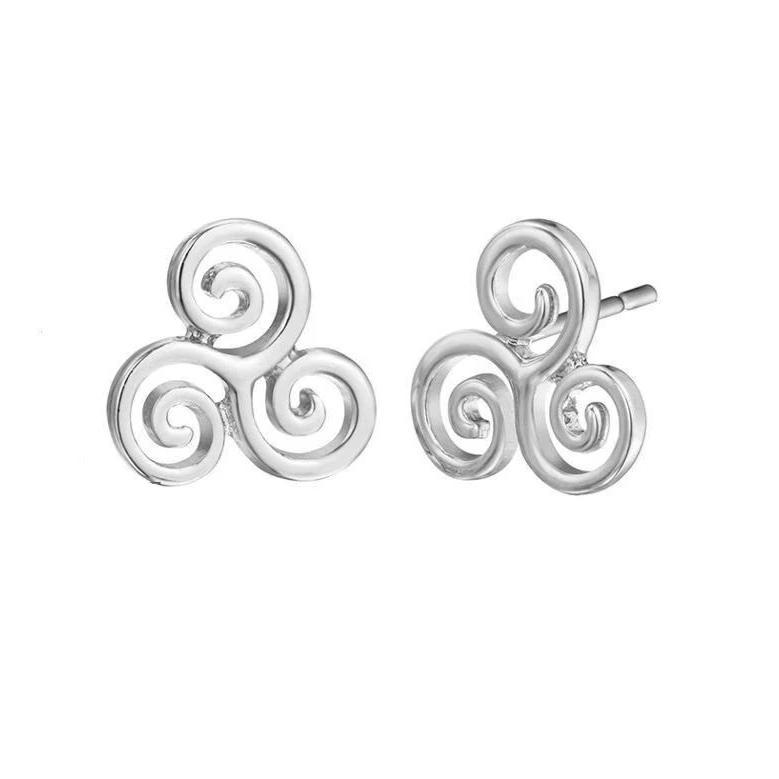The Breton lucky charm: freezing rain but human warmth
Most Bretons perceive themselves as constituting a group distinct from the rest of France, at least culturally. As a whole, these people are much closer to Celtic culture. They are not necessarily wrong. In addition, this also applies to Breton lucky charms.
You will have understood: we will concentrate here mainly on the link between Brittany and the Celts. (If you are interested in the influences of French culture, you can always look at our page dedicated to France and its regional lucky charms. )
Morbihan, Finistère, Côtes-d'Armor, Ille-et-Vilaine: traces of Celtic civilization remain very present there. All you have to do is open your eyes to see the heritage of the past, whether in traditional dances and outfits, cuisine... or in a Breton lucky charm.
Called "gwenn ha du" by the locals, the regional flag is completely emblematic of Brittany. He also knew how to conquer the hearts of millions of people. Maybe this is your case too, who knows?
The land of “Breizh” as the Bretons call it therefore certainly presents a strong culture. Its crepes and cider have seduced the taste buds. Its many churches and local saints appealed to souls and its Celtic heritage to the part of value that is in every man.
In this land of legends and myths that is Brittany, many symbols can emerge during our walks. Menhirs, dolmens, stone circles or engravings of triskelions and Celtic crosses... All this is part of the same universe: that of Breton lucky charms. A universe that has always shone through its richness and its attachment to a glorious past. And which will shine for a long time.
Menhirs, dolmens and other Celtic stones
Yes, the oldest traces of architecture and human civilization are indeed found in Europe, and more particularly in Brittany!
If you have already had the chance to visit Morbihan, you cannot have missed the numerous standing stones which punctuate the landscape. Very clearly, these ancestral monuments are part of the heritage of this beautiful region and have therefore influenced the Breton lucky charm.
Known as “ menhirs ”, we are talking here about gigantic stones erected by our ancestors (whether Celts, Bretons or even more ancient peoples). In Breton, “men” actually means stone, while “hir” means long.
Close cousins, the dolmen is often a more complex structure comprising a slab (often as large as the pillars) placed on other standing stones planted in the ground.
When you see such megaliths (another word for these giant stones), you should also know that they are generally 4000 to 6000 years old... and that their construction remains a mystery even today!
Faced with something so intriguing, hundreds of particular Breton symbols and lucky charms emerged.
Let us also point out: those which still remain standing today only represent a small part of the stones which were formerly found in Brittany. Human destruction, erosion or use as quarry stone, certain menhirs and dolmens certainly have a hard life.
However, there are still some exceptional places that we can still visit today!
The most famous is undoubtedly the Carnac site. Made up of more than 4,000 stones, over four kilometers long, this true monument, traces of the ancients who once populated Brittany, is the pride of the entire region.
Triskel: the great Breton lucky charm
Derived from the Greek word "Triskeles" meaning "three legs", the Triskele (sometimes also called Triskele or Triskelion ) is an ancient pattern of Celtic origin formed of three spirals rotating in the same direction.
Like megaliths, the Triskelion is several millennia old. From the north of Scotland to Sicily, via Greece and the whole of France, this Celtic lucky symbol is everywhere.
However, it is very clearly in Brittany that you will find it most. We are still talking here about the land that remains closest to the ancient Celtic civilization in all of Europe!
In short, with such an ancient age, it is clear that finding the original meaning of the Triskelion is no easy task.
Specialists have nevertheless put forward two interesting theories about this emblematic Breton lucky charm.
If we interpret this symbol through its trinitarian aspect, we quickly arrive at a whole bunch of concepts linked to the sacred among the Ancients. In fact, the number three was the noblest for them, and much of their worldview was based on it.
The Triskelion can therefore evoke things like the three kingdoms of the world (earthly, celestial and spiritual), the division of nature between earth, sky and water, the family composed of father, mother and children, etc.
Besides that, the other way to interpret the Triskelion is to see it as a movement. Its spirals indeed seem to rotate in a grand infinite gesture, which has neither beginning nor end.
This could be linked to the principle of constant change, unstoppable evolution and the march of time.
In any case, one thing is certain: our ancestors understood great things about our world.
No doubt they tried to pass on some of them to us through this kind of Breton lucky charm…









